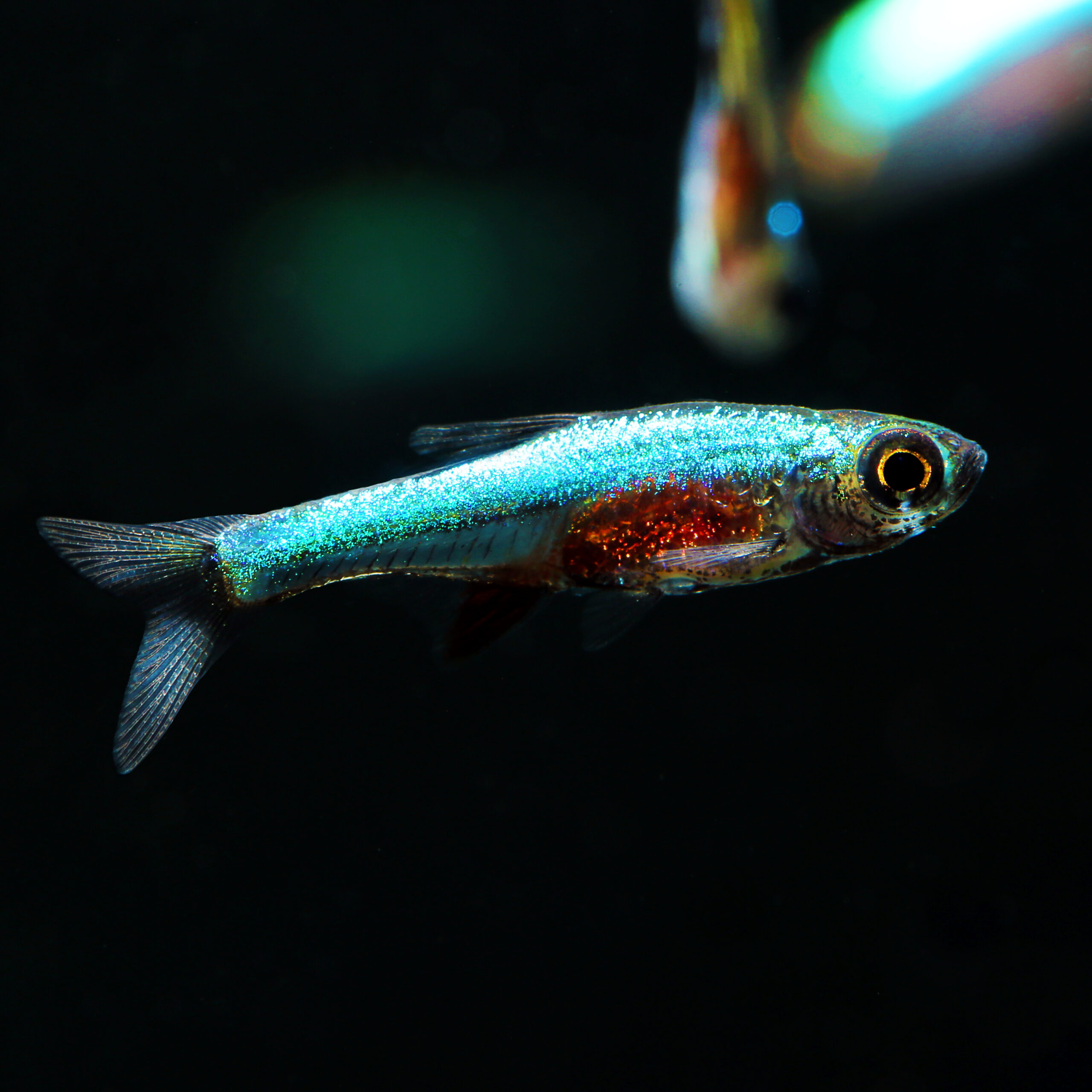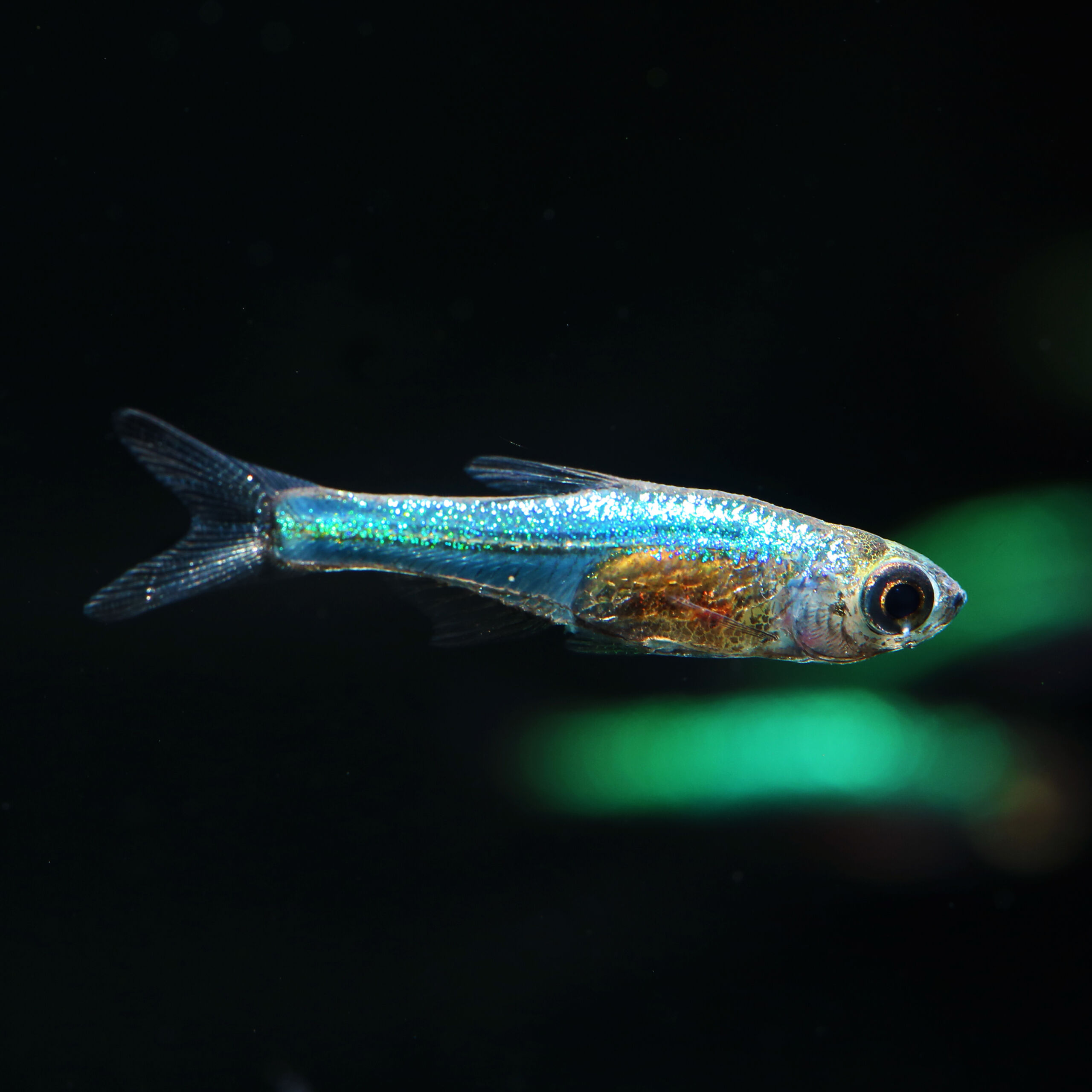Neon Blue Rasbora
Sundadanio axelrodi
The Neon Blue Rasbora attracts everyone’s attention with its intensely blue, sparkling body color.
- intensely colored
- shimmers blue-green
- grows only 2.5cm long
1 in stock
 Delivery in a few working days
Delivery in a few working days
 Free shipping from €60 across Austria
Free shipping from €60 across Austria





Important data
Product description & details
The Neon Blue Rasbora comes from Southeast Asia and is mainly found in Indonesia. Its natural habitats are ponds and slow-flowing to stagnant black waters. Characteristic of this up to 2.5cm long fish is the metallic blue body color, which sparkles blue to green in the light. The belly can be colored orange to red.
Care in the Aquarium
It is possible to keep the Neon Blue Rasbora in an aquarium of 60 liters or more. This should have dense vegetation around the edges, which however leaves enough swimming space for this lively fish. Subdued lighting and a dark substrate not only ensure that the little rasboras feel safe, but also bring out the great coloring particularly well. As a schooling fish, it should also be kept together with at least 10 members of its species. Relatively soft and humic-rich (black) water with a temperature between 23 and 26°C is optimal. The pH should be slightly acidic and not go above 7.0. Water changes should be carried out regularly as the Neon Blue Rasbora is sensitive to contaminated water. This absolutely peaceful fish can be kept in company with other peaceful and small fish as well as dwarf shrimp.
Feeding
Small types of food for rasboras as well as small live and frozen food are readily accepted by this primarily carnivorous rasboras. Frozen and live foods such as Artemia nauplii, copepods and small daphnia are suitable for this purpose.
Sexual characteristics and breeding
The male Neon Blue Rasboras are usually more strongly colored and have a dark anal fin, while the females have a completely transparent anal fin. In terms of body structure, males are also slightly slimmer than females. Breeding the Sundadanio axelrodi in the aquarium is not that easy. Soft, acidic water is essential. The addition of humic substances, for example in the form of Indian almond tree leaves, walnut leaves or alder cones, also prevents the eggs from becoming fungal. The willingness to spawn can be increased by giving more live food. As free spawners, females prefer to release their eggs between fine-feathered plants, where they are fertilized by the male. There is no brood care and there is a risk that the parents will eat their own eggs, which is why there should be a spawning grid or, better yet, a separate breeding tank. Newly hatched Neon Blue Rasboras are very small and can be fed with dust food and infusoria.






